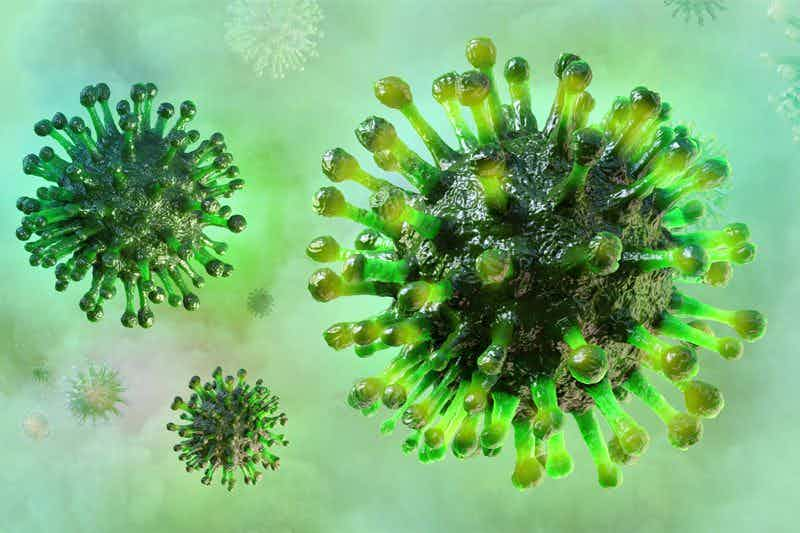On March 8, as the coronavirus pandemic took over American TV screens and front pages, New York City Mayor Bill de Blasio took the stage to speak to city residents about the virus and the disease it causes, called COVID-19.
The people that are especially at risk, said the mayor, are those with lung disease, heart disease, cancer, compromised immune systems, or diabetes. Those conditions, he said, place people infected with coronavirus “in danger of a very bad medical outcome.”
De Blasio then said that “we do know that smoking and vaping makes it easier for the disease to have more negative impact on a person’s body. It’s not the same as a pre-existing condition, but it is an important factor in the equation as well.” Noting that children have been largely spared from the most severe symptoms of the disease, he added again that “smoking and vaping is a real issue.”
“If you are a smoker or a vaper that does make you more vulnerable,” de Blasio repeated. “If you are a smoker or a vaper this is a very good time to stop that habit and we will help you.”
Is the mayor right? Does vaping (or smoking) make you more likely to catch the virus, and more prone to severe outcomes if you do? And what about the long-held belief among vapers that the anti-microbial effects of propylene glycol can protect users from viruses and bacterial infections?
Does vaping make you susceptible to coronavirus?
Unfortunately, the answer isn’t clear. Multiple studies that purport to show that vaping causes suppressed immune functions or an increased susceptibility to infections are based on experiments with mice or disembodied cells, and don’t necessarily translate to human vapers.
Further, it’s hard to detect problems that might be caused by vaping in human subjects, because the vast majority of vapers have a history of smoking. Even if vaping does have a negative effect on immune response, lung function, or other biological processes, it could be hidden by more pronounced effects caused by past smoking.
We could probably get a good idea of whether vaping suppresses immune functions by designing a large study that follows two groups—one vapers, and the other non-vapers—living in similar conditions, and measure how often both catch colds or flu, and how long it takes them to recover. The coronavirus outbreak itself may provide a vehicle to study vapers and smokers and contrast their outcomes with non-vapers and non-smokers.
The bottom line is that broad claims about vaping making a user more likely to be infected by the new coronavirus, or to suffer worse outcomes from it, are not based on research. Most likely, anti-vaping politicians or activists are simply using their pulpits to scare people away from e-cigarettes—as usual. The result of that will not be a mass exodus from consumer nicotine products, but rather more smoking, and more disease and death.
Most stories about a supposed link between vaping and respiratory disease are pure speculation—for example, the CBS News story that used Mayor de Blasio’s announcement about vaping and COVID-19 as a peg for their in-house doctor's own uninformed guessing.
Smokers are more likely to catch viral and bacterial infections, and have a harder time fighting off the infections. Cigarette smoke affects the immune system, but it also damages the lungs and airways themselves, and even causes bacteria to more effectively adhere to cells in smokers’ mouths and throats than they can in non-smokers.
That said, surprisingly small numbers of Chinese COVID-19 patients included in recent studies were smokers. More than 50 percent of Chinese men smoke cigarettes, yet the five studies I reviewed showed that just 14.5 percent, 3.9 percent, 7.3 percent, 6.4 percent, and 6.4 percent of patients smoked.
That doesn’t mean that smoking is a protective factor, but it certainly is puzzling. To be representative of the number of smokers in China, those patients should make up at least 25 percent of the total. And if smoking leads to higher rates of infection, smokers should be included at an even higher rate than that. Patients who smoked were, however, more likely than non-smokers to be among the group with more severe symptoms.
Will vaping protect you from bacteria and viruses?
Ever since vaping products became available in Europe and North America, users have reported reduced numbers of colds and flu infections after quitting cigarettes and beginning to vape. The question has always been whether the decline is caused by improved disease resistance from no longer smoking, or by some property of the vape that kills bacteria and viruses—or even by a placebo effect. The answer is still not clear.
The topic has been rehashed by vapers too many times to count in vaping forums and social media. From the early days of vaping, E-Cigarette Forum (ECF) posters discussed the possibility that propylene glycol (PG) in e-liquid might be responsible for preventing illness in vapers. There was a moderately clickbaity article on a supposed medical news site often cited as evidence—and that article has probably been reposted more times on Facebook than any other single article about vaping.
That article referred to a 1942 study that had been written up in Time magazine about the use of vaporized PG as a disinfectant. It turns out there were multiple studies done to assess the potential of PG as a sanitizing agent during and just after World War II, and that using PG and other glycols to prevent disease had a vogue at that time, as military officials struggled to prevent outbreaks of sickness in barracks and military hospitals.
However, despite what you’ve seen repeated about seven thousand times, there is no evidence that PG was actually used in civilian hospital HVAC systems. (If anyone has proof of that claim, please contact me.)
That said, there were (are?) air sanitizers that used PG as an anti-microbial agent. There are archived Environmental Protection Agency (EPA) documents as recent as 1980 describing them. But the claims manufacturers are allowed to make about their pathogen-killing effectiveness are fairly modest.
“There is considerable evidence that glycol vapors produce significant decreases in numbers of viable airborne bacteria under relatively wide conditions of relative humidity and temperature when properly and continuously dispensed by a vaporizing device so as to maintain suitable concentrations in the air of enclosed spaces,” says an archived EPA document titled “Efficacy Data and Labeling Requirements: Air Sanitizers.”
“With dispensers for the intermittent treatment of air, such as pressurized aerosols, several investigators have shown that glycols (triethylene, dipropylene, or propylene glycol) at concentrations of 5% or more in such formulations will temporarily reduce numbers of airborne bacteria when adequate amounts are dispensed under relatively ideal conditions.”
The keys here are the phrases “properly and continuously dispensed,” “maintain suitable concentrations,” and “temporarily reduce numbers of airborne bacteria.” Sanitizing a space is not the same as sterilizing it. Using PG in a room sanitizer doesn’t eliminate the risk of bacterial or viral infection, but rather reduces it. So it’s not a cure so much as more of that boring old harm reduction.
“Adequate experimental data is available to show that air sanitizers do not sterilize, disinfect, act as a germicide, or protect experimental animals from infections by airborne bacteria or viruses,” says the EPA. “Thus, claims of value in preventing or treating diseases, or providing any other health protection, whether expressed or implied, are not acceptable. Claims must clearly indicate the mitigating nature of the activity, such as ‘Temporarily reduces the number of airborne bacteria.’"
What a buzzkill, EPA.
On the other hand, there is the interesting (and weird) 2017 case study by Joanna Miler and Peter Hajek that describes a young woman with no smoking history whose lifelong recurrent tonsillitis stopped after she became a vaper.
“[The patient’s] case is consistent with recurrent exacerbation of chronic tonsillitis,” wrote the authors. “As viruses more frequently cause such exacerbations than bacteria, virucidal effects of propylene glycol may have been involved. A trial of vaping zero-nicotine e-cigarettes in patients with recurrent throat infections could clarify whether this anecdotal observation was a coincidence, a rare idiosyncratic reaction, or an effect that could benefit others.”
Cardiologist and vaping researcher Konstantinos Farsalinos published a blog about vaping and the coronavirus this week. His conclusion? “There is no evidence on any effects of e-cigarettes on coronavirus infectivity and disease progression, and we cannot exclude the possibility that the use of propylene glycol might have some beneficial effects.”
So, does PG stop vapers from getting sick? We still don’t know. Bottom line: it might. It definitely can kill bacteria and viruses. The trick, it seems, might be hitting the microbes at just the right moment with the right amount of PG. That might be difficult, although if you vape regularly you’re probably going to kill some pathogens—but not necessarily in a predictable or reliable way.
It may be that the greatest advantage of vaping is that you’re not smoking cigarettes, which of course is the whole point—and a big benefit indeed.

Jim McDonald
Vaping for: 13 years
Favorite products:
Favorite flavors: RY4-style tobaccos, fruits
Expertise in: Political and legal challenges, tobacco control haters, moral panics
Jim McDonald
Smokers created vaping for themselves without help from the tobacco industry or anti-tobacco crusaders, and I believe vapers and the vaping industry have the right to continue innovating to give everyone who wants to use nicotine access to safe and attractive non-combustible options. My goal is to provide clear, honest information about vaping and the challenges nicotine consumers face from lawmakers, regulators, and brokers of disinformation. You can find me on Twitter @whycherrywhy


